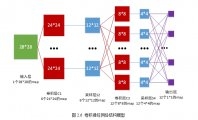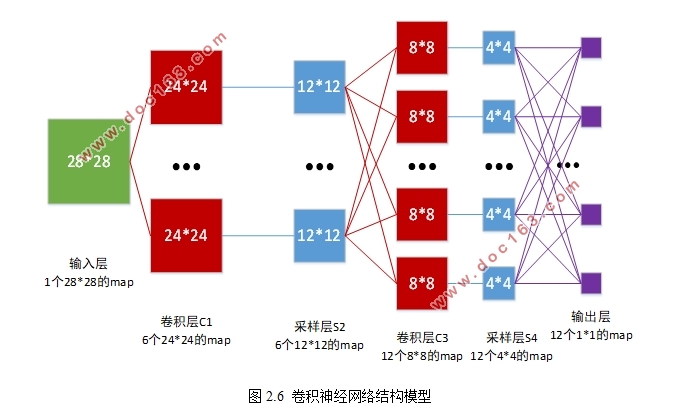卷积神经网络(CNNs)深度学习算法实现与实证分析

卷积神经网络(CNNs)深度学习算法实现与实证分析(论文16000字,外文翻译)
摘要:深度学习(Deep Learning)是机器学习(Machine Learning)领域中新兴的一个研究热点,深度学习的出现,使得机器学习更加接近了它最初被设计的目标一人工智能系统(AIS,Artificial Intelligence System)。本质上,深度学习就是含有多个隐含层的机器学习网络结构模型。深度学习通过训练大规模样本数据,从而得到样本数据的特征规律,进而对新采集的样本进行分类和回归。深度学习的理想是让计算机能够像人类一样具有独立思考与学习的能力,能够准确识别文本、图像和语音等数据信息。
深度学习在文本、图像和语音语义方面取得了很好的效果,领先于当时传统的机器学习算法。它在机器视觉、语音识别、自然语言处理等领域都取得了显著成果。深度学习的核心是特征学习,目的是通过多层次的网络模型获取分层次的特征信息,从而解决传统需要人工设计特征信息的重要难题。
卷积神经网络(CNNs,Convolutional Neural Networks)作为深度学习框架中的一个重要算法,特别擅长图像处理尤其是大图像的有关机器学习问题。卷积神经网络是前馈神经网络,因为卷积神经网络的人工神经元是经过特殊设计的二维卷积核,可以覆盖范围内的一部分单元,因此对于处理图像有着杰出的表现。 [资料来源:http://www.doc163.com]
本文首先整理总结了国内外关于深度学习的研究现状,然后对人工神经网络所涉及到的概念和算法进行了简要介绍,最后深入研究以神经网络为基础的卷积神经网络理论,并且基于卷积神经网络进一步展开了手写体数字识别(HNR,Handwritten Numeral Recognition)和美国手势语言识别(ASLR,American Sign Language Recognition)的研究。从理论和应用这两个层面对卷积神经网络的性能和网络模型结构进行评估。论文主要工作如下:
对人工神经网络和卷积神经网络的基础理论和网络模型结构进行研究分析,并且分析了卷积神经网络存在的不足之处。
将卷积神经网络应用于灰度图像上的手写体数字识别,利用经典的LeNet-5卷积神经网络模型学习手写体数字识别,以此来达到对手写体数字的高精度识别。
将卷积神经网络应用于美国手势语言识别实际应用问题中,使用三种不同的卷积神经网络模型分别训练美国手势语言识别数据库,针对这三种卷积神经网络模型在训练与测试过程中显示出的不同性能,进行分析对比不同网络模型的优劣。
关键词:卷积神经网络;深度学习;模式识别;美国手势语言识别;手写体数字识别
Implementation and empirical analysis of deep learning algorithm based on convolutional neural network (CNNs)
Abstract:Deep learning is a new research direction in the field of machine learning.Deep learning is introduced into machine learning and makes machine learning closer to its originally target:: artificial intelligence system. In essence, deep learning is a machine learning network structure model with multiple hidden layers. In depth learning, the characteristics of sample data can be obtained by training large scale sample data. The ideal of deep learning is to enable the computer to have the ability of independent thinking and learning, such as human beings.
Depth learning has achieved good results in text, image and speech semantics, leading to the traditional machine learning algorithms. It has made remarkable achievements in machine vision, speech recognition, Natural Language Processing and other fields. The core of deep learning is feature learning, which aims to obtain hierarchical information by hierarchical network, so as to solve the important problems that need to be designed manually.
[资料来源:https://www.doc163.com]
Convolutional neural network is an important algorithm in the framework of deep learning, and is especially good at dealing with machine learning problems, especially for large images. Convolutional neural network is a feed-forward neural network, because the convolutional neural network of artificial neurons through two-dimensional convolution with special design, can cover the inner part of the unit, so for image processing with outstanding performance.
This paper first summarizes the domestic and foreign research status about deep learning, then the concept and algorithm of artificial neural network involved are briefly introduced, the last in-depth study of convolutional neural network theory based on neural network, and based on the convolutional neural network further expanded the handwritten digit recognition and American sign language recognition study. The performance of the convolutional neural network and the network model structure are evaluated from the theory and application of these two layers. The main works of the paper are as follows:
[资料来源:http://www.doc163.com]
1.The basic theory of artificial neural network and convolutional neural network are analyzed.
The convolution neural network is applied to the handwritten numeral recognition on the gray image, and the handwritten numeral recognition is realized by using the LeNet-5 neural network model.
3.The application of convolutional neural network in American sign language recognition problems in practical applications, the use of three different convolution neural network model were trained in American sign language recognition database, through the performance of these three kinds of convolution neural network model in the training and testing process, through the comparison and analysis of different network models.
Key words: Convolutionalnetworks; Deep learning; Patternrecognition; American sign language recognition; Handwritten numeral recognition
[版权所有:http://DOC163.com]

目 录
一、 绪论 1
(一)研究背景和意义 1
(二)国内外研究现状 2
1、卷积神经网络研究现状 2
2、基于灰度图像的手写体数字识别研究现状 4
3、基于静态二维的美国手势语言识别研究现状 4
(三)深度学习存在的问题 4
1、局部最优问题 4
2、内存消耗巨大,计算复杂 5
3、人脑机理运用不足 5
4、整个网络系统的设计 5
(四)本文主要内容 5
二、人工神经网络和卷积神经网络的基础 6
(一)人工神经网络 6
1、单个神经元 6 [版权所有:http://DOC163.com]
2、人工神经网络 8
(二)卷积神经网络 8
1、CNN的整体网络结构 8
2、网络初始化 9
3、前向传播 9
4、反向传播算法(BP算法)调整权重 11
三、卷积神经网络在手写体数字识别上的应用 13
(一)手写体数字识别数据集MNIST 13
(二)卷积神经网络构造模型说明 13
(三)实验结果 15
(四)实验结果对比与分析 16
(五)本章小结 17
四、卷积神经网络在美国手势语言识别中的应用 18
(一)美国手势语言识别数据集构建 18
(二)美国手势语言识别的卷积神经网络构造模型说明 18
1、Alexnet网络模型 18
2、Googlenet网络模型 19
3、Caffenet网络模型 19
(三)实验结果 20
1、Alexnet网络模型的实验结果 20
2、Googlenet网络模型的实验结果 21
3、Caffenet网络模型的实验结果 21
(四)实验结果对比分析 22
(五)本章小结 23
五、总结和展望 24
(一)工作总结 24
(二)展望 24
参考文献 25
附录 27
(一)Googlenet网络模型结构 27
(二)Caffenet网络模型结构 28
致谢 29
[资料来源:http://www.doc163.com]
